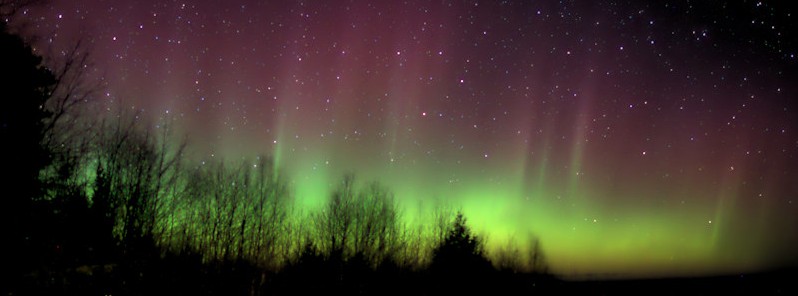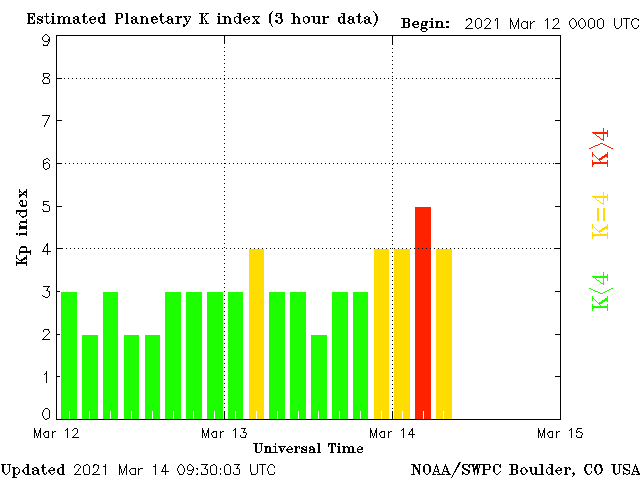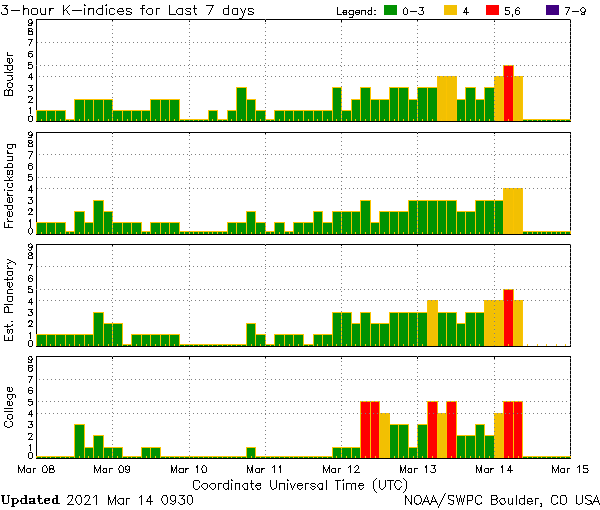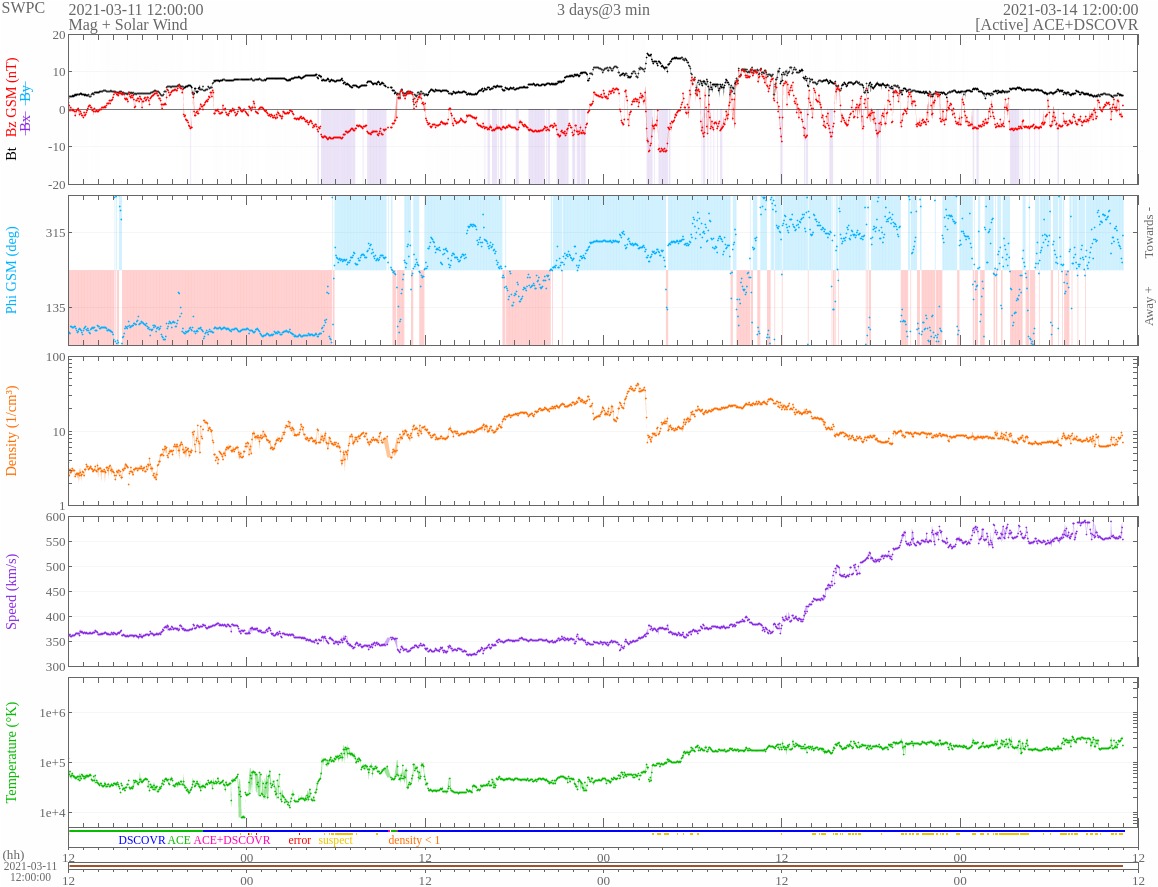Negative polarity CH HSS sparks G1 – Minor geomagnetic storm and auroras in the lower 48

Earth is under the influence of a negative polarity coronal hole high speed stream, sparking G1 – Minor geomagnetic storm and auroras as low as Michigan and Wisconsin, U.S.
Enhanced solar wind parameters were observed on March 13, 2021, due to co-rotating interaction region and negative polarity CH HSS influence. Wind speeds gradually increased from 350 km/s to 580 km/h by 00:30 UTC on March 14 and peaked at 595 km/s at 08:59 UTC.
They are expected to remain enhanced today due to sustained CH HSS influence and return to background conditions on March 15 and 16 as CH HSS influence diminishes.
Geomagnetic K-index of 4 threshold was reached at 05:45 UTC on March 13 and again at 23:59. G1 – Minor geomagnetic storm conditions (K-index of 5) were reached at 05:50 UTC today.


Quiet to unsettled conditions, with isolated active periods, are expected through the rest of the UTC day as CH HSS effects continue.
A return to mostly quiet levels is anticipated March 15 and 16.

As a result of enhanced conditions, auroras spilled across the Canadian border into the United States.
"The auroras appeared shortly after 8PM, and I watched them intensify and spike for about 45 minutes," Thomas Spence of Tofte, Minnesota said. "The Superior National Forest near Tofte was a great place to watch the show."
"Auroras appearing in the 'lower 48' are a sign that Solar Cycle 25 is intensifying," Dr. Tony Phillips of the SpaceWeather.com said. "Today, it's Minnesota and Michigan; in a few years, perhaps, California and Texas."
In addition, red auroras were recorded on March 10 in the Finish Lapland.
"What's so tricky about red? The action, if you can call it that, takes place more than 150 km [93 miles] above Earth's surface," Phillips explains.
"At that high altitude, oxygen atoms excited by solar wind slowly spit out red photons. Emphasis on slowly. The radiative lifetime of the transition is 110 seconds–an eternity at the quantum scale. The atoms must remain undisturbed that long to produce their red light. Perhaps that's why red auroras often appear when conditions are quiet."
Featured image: Aurora taken by Sue Evans on March 13, 2021, at Big Bay, Michigan, U.S. Credit: SpaceWeather.com

Another G1 storm forecast for March 20th.
https://www.spaceweatherlive.com/en/reports/3-day-forecast.html